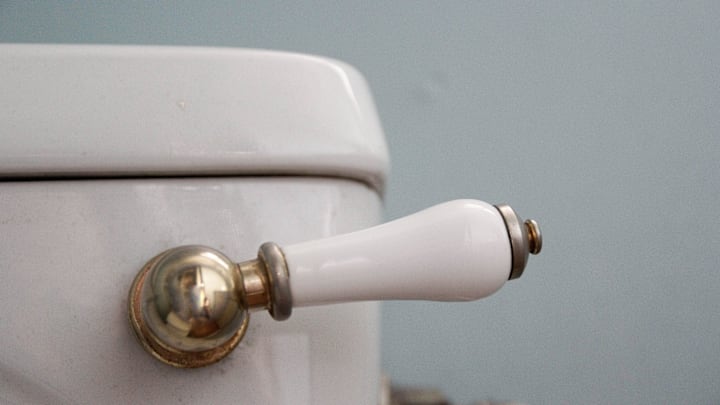Old houses have all kinds of quirks, from coal chutes to carpeted bathrooms to fallout shelters. Tour some pre-World War II houses in the northeast and you may come across one of the more peculiar features: a freestanding toilet in the basement, minus any other typical bathroom trappings. Colloquially, it’s known as a “Pittsburgh potty.” And once upon a time, it seemed like a good idea.
The motive behind the public potty was not, as you might suspect, any kind of excretory exhibitionism. Instead, the open-concept toilet was installed to serve a different purpose. Some experts say that this feature, which mostly appeared in Pennsylvania homes built circa 1880 to 1910, was added to prevent sewage backups from entering the nicer parts of a house. (Indoor plumbing, a relatively recent addition to urban areas in the late 19th and early 20th centuries, didn’t quite have all the kinks worked out.)
If there was a sewage backup on your block back then, it could potentially enter your home through the lowest point in the plumbing system, meaning the toilet. Rather than have the contents of that fecal cauldron spill into a central living area, it was better to suffer it in the basement, where any messes could be easily cleaned up.
“As the [plumbing] systems were used more and more, backups would occur,” William Martin, an architect and chairman of the Historic Preservation Committee at the Pascack Historical Society, told Pittsburgh radio station WESA in 2017. “Well, in a home, what happens is the sewage backs up the pipe and into the fixtures that are connected to it. So, if you have your main living space on your first floor and you have your nice tiled beautiful bathroom and the sewer backs up on your street—and you might not even be the cause of it—the sewer backs up. It’s going to come up through your bathtub, it’s going to come up through your toilet and it’s going to spill over and it’s going to be all over your living space.”
The solution, Martin said, was the lone toilet, which was less a personal commode and more of an emergency outlet. “The idea was to put a toilet fixture in the basement, and that’s why they’re by themselves, because they really weren’t meant to be used. And they are at the lowest point of the system.” (Floor drains weren’t common at the time.)

Once these emergency potties were commonplace, homeowners took to making use of them. Steel mill workers returning to a home could use the basement as a kind of mud room, stripping off their soiled clothes and tending to other business before joining their family upstairs. Would it be awkward to go down there and find your father voiding his bowels in the middle of the room? Yes, but remember that basements were rarely finished or considered occupied space at the time.
Another reason for the lone, below-grade toilet is the fact that for some working-class residents, bathroom fixtures didn’t always arrive in totality. Someone might install just a sink, a tub, or a toilet, but not everything at once. If someone wanted a commode, they might opt for the basement, which was typically the cheapest way to route plumbing at the time.
Some residents may have even considered the potties a unique feature of their home rather than a common fixture. Writing for Pittsburgh Magazine in 2010, Virginia Montanez recalled her adolescent belief that her grandmother had made a purposeful decision to install a basement toilet until she began house-hunting as an adult: “My husband and I visited house after house, and in every fourth basement—a potty! Out in the middle of nowhere! Potties haphazardly strewn about basements of every shape and size. Potties with handles and potties with pull cords. Potties with lids and potties without. Potties so small you wonder if chipmunks use that potty at night. Potties so loud and big and water-wasteful, you fear they could suck the space/time continuum into them.”
The potties can be found in Pennsylvania, New Jersey, New York, and in other areas. Does it add to a property’s value? Likely not, though some creative realtors may opt to deem it a half-bath.
